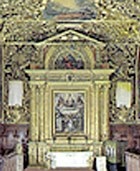The architect and mathematician Bernardino (Bino) Sozi was born in Perugia. All of his documented and attributed work was in his native city. He was appointed as civic architect in 1576, but gave up the post after a year at his own request.
Perugia
Chiesa della Morte (1575-1603)
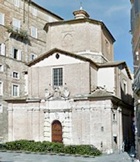
[Could this design in the Cooper-Hewitt National Design Museum of the Smithsonian Institute, Washington, which is signed “Bino Sotij nel primo offitio 1573” and relates to the addition of chapels to an octagonal church, relate to the Chiesa della Morte ??]
The church is in the form of a Greek cross with an internal octagonal floor plan and a high cupola. In this site on the restoration by Antonio de Feo Restauri in 2005, it is suggested that the heavy brick cladding of the cupola was not envisaged in the original design.
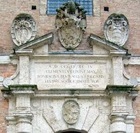
Facade of Sant’ Agostino (1579)
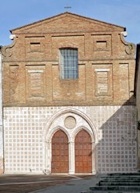
Tabernacle (1579)
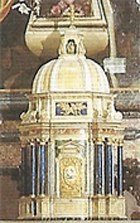
The tabernacle was largely destroyed in 1762 so that its gold leaf could be recovered: only the upper part survives, on the altar of the Cappella di San Francesco, to the left of the presbytery of the Duomo. [It was not there at the time of my visit of 2013] A drawing (18th century) by Baldassarre Orsini of the complete tabernacle survives in the Accademia di Belle Arti.
Facade of the Maestà delle Volte (1584)

Organ (1584)
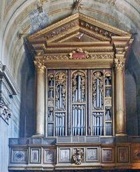
Stucco decoration (1584)
The stucco decoration of the altar of San Fortunato, for which Bino Sozi was paid in 1584, was presumably destroyed when the church was remodelled in 1663.
Facade of San Luca (1586)
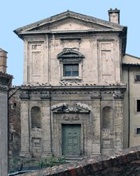
Altar (1586)
Campanile of the Duomo (1606-12)
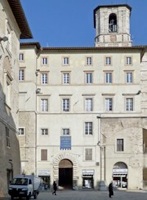
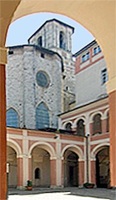
The new campanile of the Duomo, which replaced an earlier one that was demolished in 1462, was built by Valentino Martelli to a design by Bino Sozi. Its four bells were rung for the first time on 24th July, 1612.
Read more:
M. G. Bistoni, G. Casagrande and P. Monacchia, “Bino Sozi: Architetto della Maestà delle Volte a Perugia”, Esercizi 1 (1978) 187-96
Return to Art in: Perugia.


